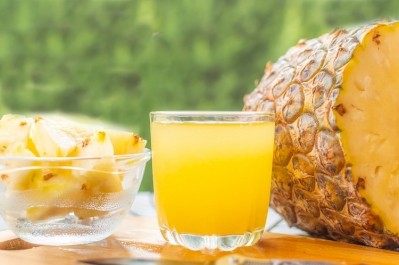FDA considers lowering the Brix level for pasteurized orange juice, but seeks additional information

In a Federal Register notice published this morning, FDA requested additional information about a proposed reduction in the Brix level of pasteurized orange juice to 10% from the 10.5% currently required in the beverage’s standard of identity.
The Florida Citrus Processors Association and Florida Citrus Mutual requested the change in a citizen petition filed with the agency in July 2022 to “bring the pasteurized orange juice standard into alignment with the existing properties of the mature oranges used for juice production, as well as certain international food standards.”
The groups argue most consumers will not notice a difference in taste, and that there are no health benefits to having fruit sugar content enhanced beyond the natural level in mature oranges, but that failing to make the change will disadvantage pasteurized orange juice products in the market.
“Without these changes, manufacturers of finished pasteurized orange juice products must increasingly rely on higher Brix imported juice to meet or exceed the US minimum Brix for pasteurized orange juice,” they argue in the citizen petition.
Citrus greening, severe weather have altered Florida oranges’ Brix levels
The groups are calling for the change 60 years after the original standard of identity for orange juice was published because citrus greening disease has spread to “nearly every orange grove in [Florida], which directly impacts crop yields” – a problem worsened by severe weather in recent years that has furthered reduced orang product and impacted normal fruit sugar content.
“As a result, Florida’s average Brix level has steadily dropped from 12.6 in the 2010-11 orange season to 10.5 in the 2020-21 season,” the groups noted.
They add that experts do not expect Brix levels to return to previous averages without a cure for citrus greening, which has yet to be found.
While orange juice producers could draw on crops from California which has not been as impacted by weather, that fruit primarily is sold fresh – leaving citrus processors to rely on Florida production for pasteurized orange juice, according to the citizen petition.
Finally, the group’s argue, FDA should accommodate Florida producers’ needs because even the agency acknowledged in the original standard of identity that Florida was the main source of oranges for juice, and the standard was set based on their Brix levels at the time.
How would changing the standard impact consumers?
In considering the request, FDA is seeking additional information, including how the change would align with consumer perceptions of orange juice and if they would accept juice with a less sweet taste or less orange flavor.
“Would amending the SOI for POJ from 10.5 to 10 percent by weight of orange juice soluble solids continue to promote honesty and fair dealing in the interest of consumers?” asks FDA, adding: “Specifically, would such an amendment result in products that are inconsistent with consumer expectations about POJ?”
The petitioners argue that consumers would accept juice with a lower minimum Brix level, based on a survey of 1, 027 adults who consume 100% fruit juice at least once in a typical two-week period.
The survey found 96% of consumers accepted the idea that a natural product, like orange juice, would have varying sweetness, 95% said orange juice with less sugar should still be called orange juice, and 76% said they had no concerns about a less sweet orange juice.
FDA criticized the survey for not providing information on “how these general statements and preferences relate to the Brix level for POJ,” hence their request for addition insights.
The agency also seeks additional information on how the proposed change to the standard of identity would impact the Nutrition Facts label and a correlation between the Brix level and amount of potassium, folate and vitamin C in juice.
“Would such products have lower levels of certain nutrients than POJ under the current SOI? If so, would such decreases in nutrient levels lead consumers to not accept such products? Would consumers be willing to accept POJ with different amounts of certain nutrients? Would it depend on the amount the nutrient declaration was changed?” the agency asks.
FDA also notes that under the regulations orange juice that does not meet the minimum Brix of 10.5 can be blended with concentrated orange juice ingredients or with a higher-Brix POJ to meet the minimum.
It asks if the use of these ingredients impact consumers’ decisions to buy or consumer POJ products and if limiting the contribution of these ingredients to only one-fourth of the total orange juice solids would further impact their decision.
Likewise, the agency asks if the use of oranges from other countries or states to meet the current standard would influence consumers’ purchasing habits.
Would a temporary marketing permit suffice?
Finally, FDA asks if a less drastic temporary marketing permit to sell pasteurized OJ with Brix levels between 10 and 10.5 alleviate industry concerns and buy stakeholders time to gather additional consumer insights.
The petitioners suggest that a temporary marketing permit would not sufficiently alleviate the problem because they do not see a relief from citrus greening or extreme weather conditions in the near future.
Stakeholders with additional insights or answers to FDA’s questions have until Oct. 16 to file comments under the Docket No. FDA-2022-P-1668.






